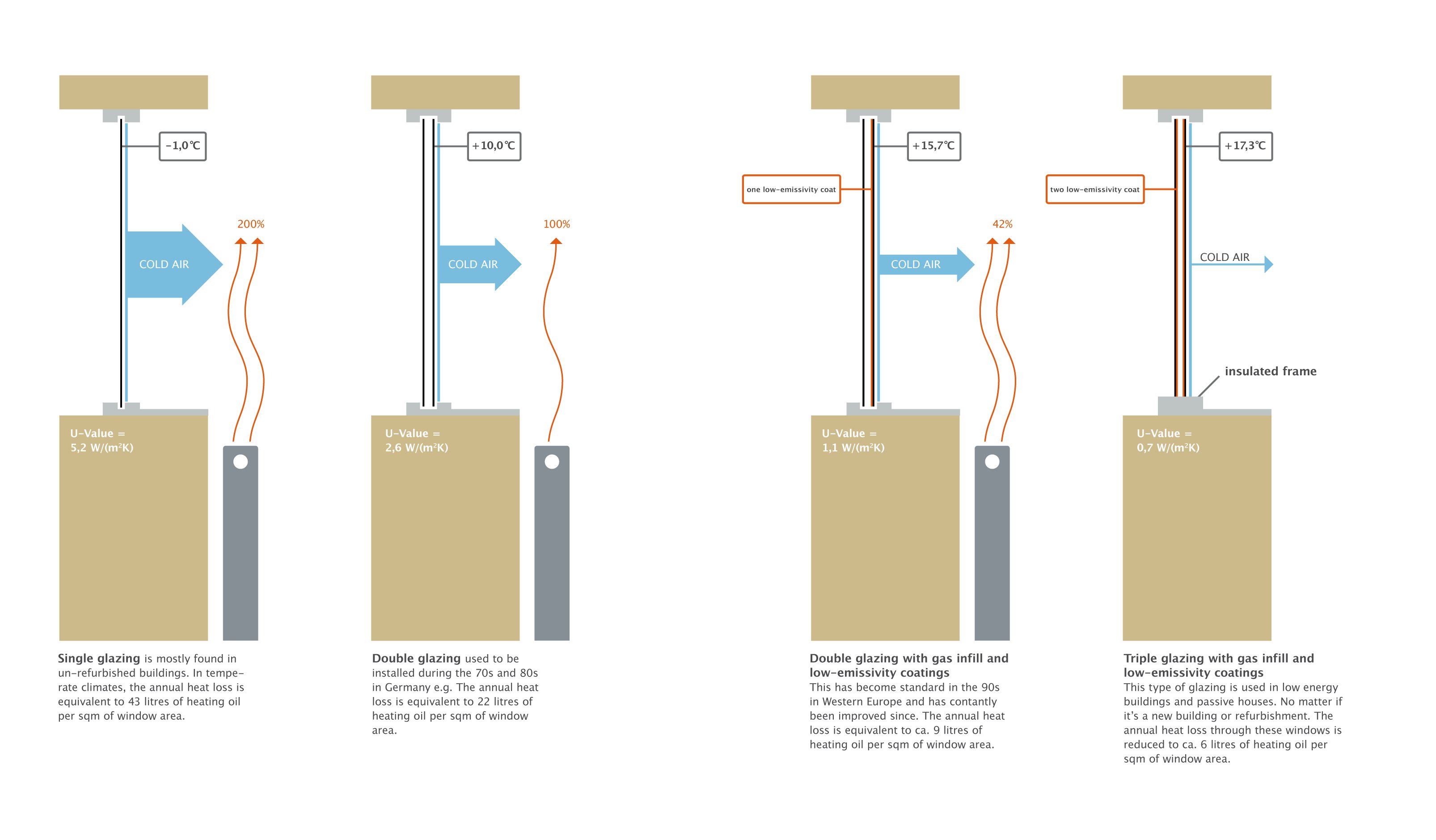Studies have shown that windows account fur ca. 25% of all energy loss in buildings. Windows consist of a number of components (glass, coating, gas filling, spacer, frame) that can be combined so that the window meets the requirements for insulation properties, daylight conditions, solar shading and also noise reduction. A balance must be found between the requirements for air conditioning, space heating and artificial lighting. The type of glass for example will greatly affect the heat gain due to solar energy in the interior space. For maximum solar heat gain, clear glazing, which lets in lots of visible light and solar heat, thus reducing the need for heating and lighting, should be selected. Where solar heat gain is not desired, as in warmer climates, glazing types that minimize the solar heat gain should be chosen. For special cases, where larger amounts of daylight are desired with minimal heat transmission spectrally selective glazing is preferable.

These thermal gains and losses should be taken into account when designing windows. In cooler climates windows should be orientated to maximise solar heat gain. Whereas if a building runs the risk of over-heating, the windows should be protected from direct solar gains and external shading is a must. Daylight is also an important factor to consider in the design of windows. Daylight not only offsets the need for artificial lighting, but also provides a desirable and comfortable internal environment for its occupants. Windows are also the main source of natural ventilation and the choice of window can significantly affect the provision of ventilation.